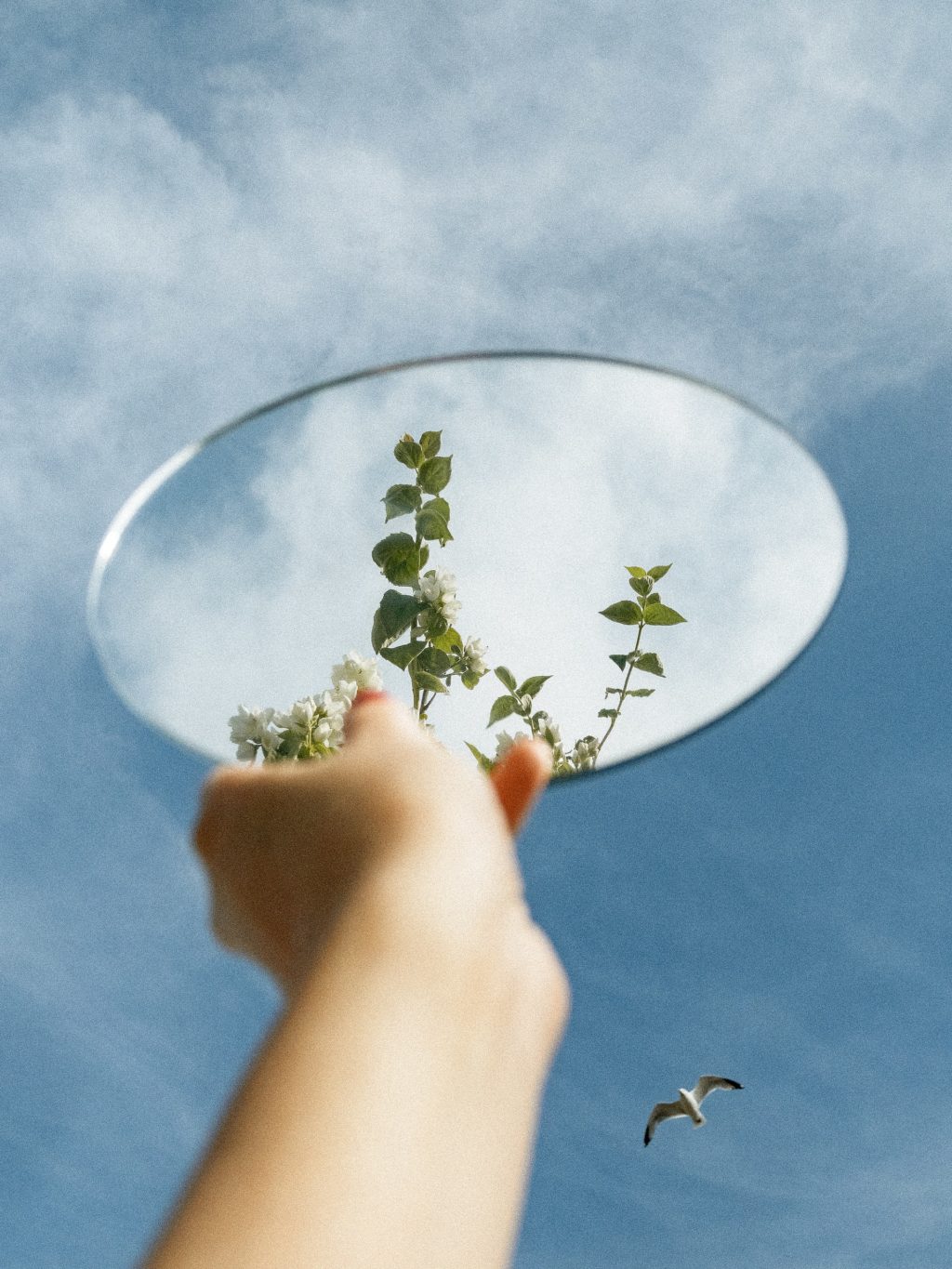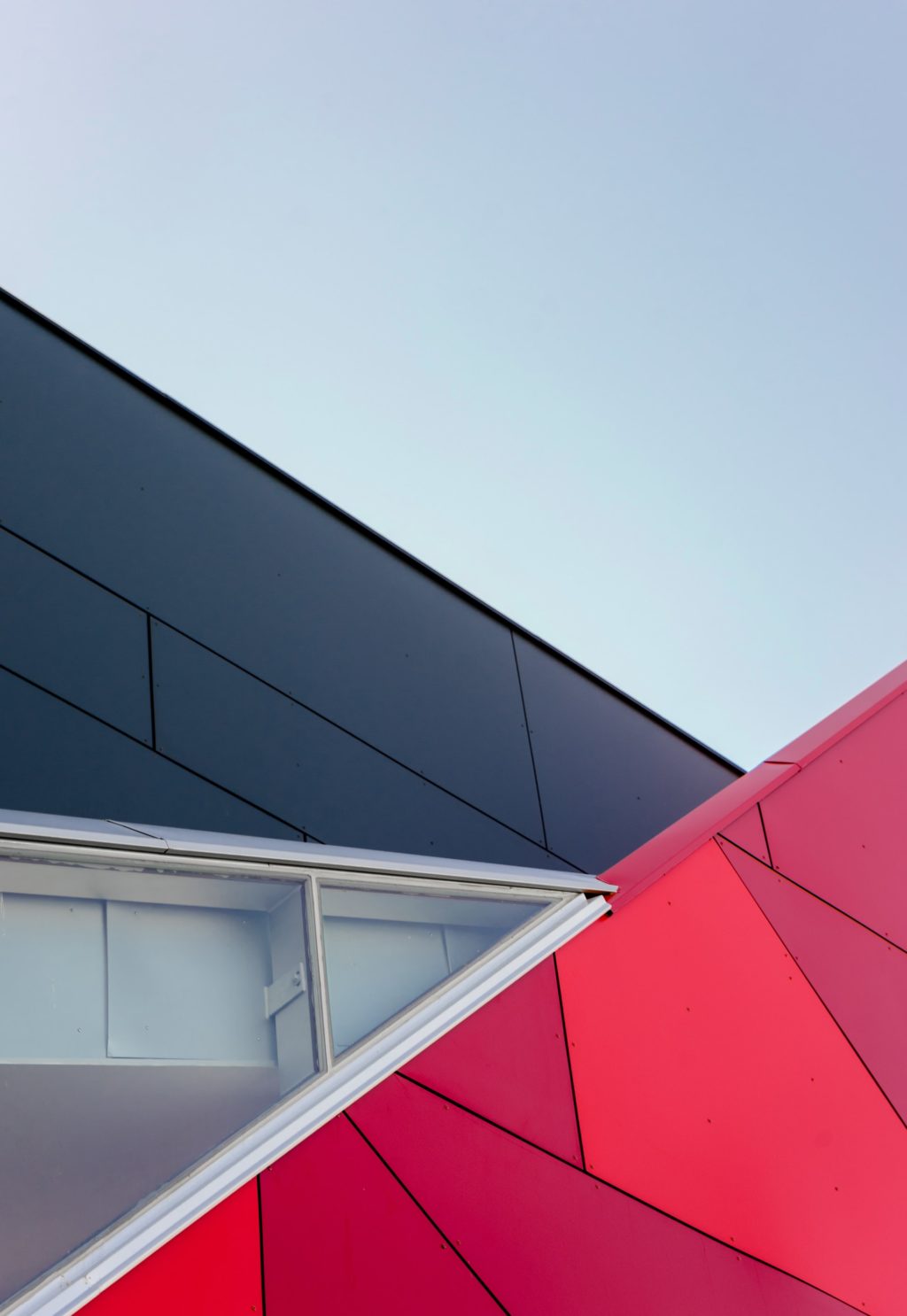Geometry is around us everywhere and in most photos, we can already see some geometry without incorporating it intentionally – even in portraits through poses and compositions. If we think about the compositional guidelines that we use in photography, they are pretty much based on geometry too. So, basically every photo that we capture, may have geometry in one form or the other.
In this article, we will look at how to use geometry for creative composition in photography.

Note: Look at the images in this article and see if you are able to find some sort of geometry in each image.
What Is Geometry?
Geometry is a branch of mathematics that deals with lines, shapes, and their dimensions. You learn how to draw shapes, how to measure their dimensions, etc. and geometry has a wide range of applications in many fields, for example, architecture, space, mechanics, etc. We would have learned geometry in high school, so when you hear the word geometry, you start to visualize lines, shapes, angles, dimensions, and so on.
Geometry is present everywhere in man-made things and in nature. If you look closely at everything around you, you will see a lot of geometrical forms and concepts that can be used creatively to compose photographs.
Why Should You Use Geometry In Photography?
Photography composition with geometry can be fascinating, can make the image look dynamic, and can add a lot of depth and visual appeal to a photograph. All the lines, curves, shapes, and angles can add a dynamic mood to the image and this can be used to create visually soothing images or can be used to create a mood of tension in the images.
When using geometry in photography, we are basically incorporating shapes and lines in the photographs. The way the resulting images look depends on how you use geometry in the photographs. To incorporate geometry, you need to pay a lot of attention to the scene and subjects and this itself is a calming way to discover interesting frames and bring more creativity into your photography.
Geometry also makes your photo look neat and gives it an orderly look. Moreover, the structure used to frame the subject may deliver a timeless feeling or a feeling of strength and existence.
The mood created by squares and rectangles may apply to lines, especially horizontal lines, but they also will add a dynamic mood to the image captured. Horizontal lines can be used to show strength, but be careful how you use them in the image. A combination of horizontal and vertical lines can be used to frame a subject.
Diagonal lines can be used to convey motion or direction. Using diagonal lines in composition can help direct the viewer’s attention to a particular point or area in the image and can help with dynamic compositions.
Triangles based on how they are used may create tension or sometimes even balance in images. Two intersecting lines or even three can form the golden triangle and these compositions can be a bit complex/advanced, but very powerful.
Circles may give a feeling of continuous movement and also help with capturing dynamic photographs.

Geometric Shapes
Geometric shapes are many and some of the most common shapes that we can think of are squares, rectangles, circles, triangles, spirals, and other polygonal shapes. These are found in natural and manmade structures and elements.
1. Square
A square shape is a closed geometrical structure with neat solid edges and dimensions and hence can show a feeling of stability.
2. Rectangle
A rectangular shape similar to a square again has clean solid edges and dimensions and hence again shows a feeling of stability.
3. Circle
Circles are circular and they go on and on endlessly and hence they can represent a feeling of motion and can help with a dynamic mood in images. They can also bring in a sense of harmony in the image.

4. Triangle
Triangles also have a solid base and if they are used in that position in an image, for example including a triangular architectural structure with the base horizontal, then they can represent stability in the image. Triangles can also represent power.
Downward (inverted) or sideward facing triangles can induce a feeling of tension in the image, however, you can use the golden triangle compositional guideline to create visually compelling images. This is discussed later in this article.
5. Polygon
These shapes are found both naturally and man-made and these convey mood depending on how they are used in the image. Polygonal shapes can also represent stability if used to frame a subject or when used as patterns they can form brilliant eye-catching images.
Types Of Geometry
We have discussed previously that geometry is found both naturally and in man-made structures.
Natural Geometry
Geometry that can be found everywhere in nature in trees, plants, flowers, leaves, landscapes, birds, animals, seashells, snowflakes, beehives, coastlines, mountains, rivers, valleys, and so on is called natural geometry. They are seen in the form of symmetry, spirals, lines, fractals, and so on.
The geometry that can be found around us can be broadly classified under two categories – hard and soft geometry.
Hard Geometry Or True Geometry
Hard geometry is anything that has a well-defined geometric shape. This geometry is something that actually exists in the scene. These are usually man-made because of the precise measurements and designs implemented into creating things and structures. However, there are natural hard geometry as well in crystals and other elements for example beehives. Hard geometry is easily evident in a scene because of these hard-cut features.

Soft Geometry Or Perceptual Geometry
Soft geometry is still a geometrical shape that may not have a well-defined shape. They are mostly found in nature and so you will need to observe a scene from many perspectives and look closely and carefully to incorporate them in your images. Mountain peaks, valleys, rivers, coastlines, flowers, fields, landscapes, fencing, etc., are great places to look for geometry. Human poses in portraits can make use of brilliant geometry for composition.
Soft or perceptual geometry can also be found in man-made structures, but they may not be too clear cut and prominent like hard geometry. You will need to look out for the shapes and patterns to capture the geometry in them.

How To Incorporate Geometry In Different Genres Of Photography
When you think of geometry in photography, it is just not about buildings and other architectural structures. Wherever you look around, you may be able to see geometry in one form or the other. These can be incorporated into photographic composition for creative and powerful photographs.
Also looking for the best light is important for creating dramatic images. Geometric images work well with side lighting and so it is best to shoot these early in the morning or late in the afternoon.
1. Architectural Photography
Architectural photography is the most common genre where geometry is highly prominent. Remember that when shooting architecture or when including architecture as an element in another genre, that you try various perspectives because geometrical shapes can look different from different perspectives.
2. Abstract Photography
You can also create abstract photographs by including geometry in them. Abstract photography does not have specific rules and it all depends on how you see things differently. Observe closely and make use of light and shadows, perspective and compositions as powerful tools to get interesting abstract images that make use of geometry.
3. Portrait And Fashion Photography
You may wonder about geometry in portrait or fashion photography. In fashion or portrait photography, especially urban portraits, the photographer needs to bring emphasis to all the elements in the scene including the subject to create a meaningful and compelling photograph. So besides using geometry in the background and surrounding elements, photographers pose their models in specific ways to include geometry in their poses. Including geometry also adds a dynamic mood to the images.
Here are some examples:


4. Street Photography
For street photography, we have always heard of terms like, “being at the right place at the right time,” “decisive moment,” “overcoming your fear,” etc. When you are caught up in these things, do not forget that composition is also an important factor in street photography.
Streets are a great place to make use of geometry for powerful compositions and as a result, capture compelling photographs. You can see geometry everywhere – on the roads, streets, buildings, doors, windows, lamp posts, and other structures.
Once you have a subject, look for the best angle and perspective so you can incorporate geometry in your composition. This could be a leading line on the street/road, a door/window, an arch, etc., that can be used to frame the subject, or even lines in architectural structures that can be used to direct viewers' attention in the shot.

5. Landscape Photography
Landscape photography is not about just photographing the beautiful landscapes in front of you. If you observe landscapes, they have a lot of beautiful and unusual geometry in them. Incorporate these for effective compositions and making use of the right light conditions can enhance the effect of geometry in landscapes. Besides landscapes, aerial photography can open doors to obsessive geometric photography in both urban and rural landscapes.


These are just some examples of some genres where geometry can be used in photographic compositions. These apply to most other genres of photography as well.
How To Use Geometry In Photographic Compositions
Geometry in compositions can be achieved in many ways in almost all genres of photography. You need a prominent subject with supporting elements and either the subject or the supporting elements can have geometry in them. This includes the foreground and the background as well.
Look for strong shapes even in objects that are not geometric or arrange elements to form a geometrical pattern to effectively use geometry in photography compositions. If you are a beginner, make use of the grid feature for various compositions.
1. Rule Of Thirds
The rule of thirds is the most common compositional guideline used in photography and it in itself can be used for geometrical compositions. There are horizontal and vertical lines and four intersecting points.
Placing elements in the intersecting points of the rule of third lines can lead to powerful images, but go beyond that and include geometrical patterns that can flow along those lines for powerful compositions.
2. Rule Of Odds
Rule of odds is an interesting composition as it makes the image look dynamic. For example, if you are using 3 elements in your frame, when composing the image, arrange these elements in a triangular pattern for example, instead of a straight line and this can help with incorporating geometry in composition which will result in interesting photographs and will also help to show depth in the photographs.

3. Symmetry
Symmetry in photography is one of the best ways to show geometry in a balanced and stable form. Look for interesting symmetrical patterns and place your subject in the most interesting part for remarkable results. You do not need to look for perfect symmetry. Sometimes imperfect symmetry can help to create tension in the image. So use the type of symmetry depending on your visual story.

4. Reflections
Reflection is another way to compose and capture a photograph using geometry. It can provide different moods based on what and how you are photographing. It is a bit similar to symmetry when you have perfect reflections of objects and they sometimes complete the geometrical pattern. Look for creative ways to compose reflection shots.

5. Golden Spiral
The golden spiral is found naturally in nature and also in other man-made things and structures. Besides those, incorporating the golden spiral when making geometric compositions can add balance to your photos. Look to place elements along the spiral and the most important element or subject in the center of the spiral. You can also choose to place the most important element in the center and leave the remaining space empty, so you can make use of negative space to give emphasis to your subject.

6. Golden Triangle
If you want to incorporate the golden triangle as a guideline when composing the image, think in diagonals so you can create powerful and dynamic compositions. This compositional technique can be used to break the scene into parts just like we do in the rule of thirds and then put emphasis on certain areas of the frame for powerful compositions.
Draw a diagonal in a rectangular frame from one corner to another. Then from the remaining corners, draw a perpendicular to the diagonal. The intersecting points are the points of interest where you should try to place the most important part of the image, for example, face, eyes in a portrait, etc. For other genres, place the main subject at the point of intersection.
Besides the above, you could incorporate triangular shapes in your compositions. This could be from architectural structures or natural features like mountains, a river cutting through a landscape forming triangles, posing hands and legs in the triangular form in portraits, arranging people in group portraits to form a triangular shape, etc.

7. Colors
Sometimes geometry can be just boring in itself in an image. Using colors in those situations can help achieve incredibly interesting geometric images.
Look for interesting colors in geometry. You could put complementary colors together, similar tones together, or even use colors depending on the mood you want to show in the images because colors are also linked to emotions.

8. Minimalism
Minimalism is most of the time linked to geometry and this composition is a great way to include geometry in photography. You could use a simple geometric frame to compose your subject or use simple lines in the image to direct the viewer.

9. Curves
We have heard of the S curve being used in photography composition and this is also a form of geometry that you can incorporate in photography. S curves can be found in winding lanes, roads, rivers, streams, coastlines, etc., but do not restrict yourself to these. There are man-made structures that will allow the use of the S curve for composition or in portrait or fashion photography, you can pose your model to form a neat S curve that will immediately draw the viewers’ attention.
10. Leading Lines
Lines are one of the most powerful ways to bring attention to a part of the scene. They play a good role in directing the viewer’s attention and hence are called leading lines. These leading lines are lines that point you to the most important part of the frame. Leading lines can be just single or multiple lines all pointing towards the main area in the frame.
Leading lines work well when they start from a corner and point into the frame, but this is not mandatory. If it is possible to frame them from the corner towards the main area, then it can add a more dynamic mood. Make sure that the lines do not divide the frame into two parts.

1. Horizontal And Vertical Lines
If you are wondering whether horizontal and vertical lines will help with composition in photography, the answer is yes, they will help to create powerful and interesting compositions. Use these lines as leading lines and if there are intersecting horizontal and vertical lines, place your subject on or near them or use them to frame your subject.

2. Diagonal Lines
Diagonal lines can be used to show movement in a photograph. They help to show depth in a landscape or other images and work well when used from left to right, but it is ok otherwise too. They can also be used to point the viewer to the important area in a photograph.
Diagonal lines can be found in nature or in manmade structures. Look around to see how you can incorporate them into your photographic compositions.

3. Converging Lines
Converging lines are one of the most common that are found in many places and are one of the most effective in directing viewers’ attention. There can be two or more lines converging towards the point of interest. You can find converging lines in nature, for example, trees, and man-made, for example, roads, bridges, and other structures.

4. Diverging Lines
Diverging lines are lines that are branching away from the foreground and can be used to show some form of tension in images. This may not be the case all the time. When there are two diverging lines, and if you are able to place elements at the end or along the lines to create some sort of balance, then that can make the image very interesting and could be a perfect example of visual balance.
5. Parallel Lines
Parallel lines, although not a much talked about topic in photography, can be used to show balance and rhythm in photography. They also lend a mood to the image depending on how the lines are used – horizontal or vertical. Horizontal lines can help show a calm and peaceful mood whereas vertical lines can show power and growth.

6. Intersecting Lines
Intersecting lines are usually diagonal or are at an angle and can help create dynamic images. They can also be used more like the golden triangle for composition. Look to place the subject near the point of intersection as it is a place where the viewer's attention goes to. Also, intersecting lines can be used to frame a subject or connect more than one element in the frame.

11. Repetitions And Patterns
Patterns and repetitions are a great way to make a boring image look dramatic and interesting. These can form an interesting texture in your images and draw the viewers’ attention. You can either fill the frame with repetitions and patterns or use them in just a part of the frame. Repetition in layers can create depth in images.
Some examples of combining geometry with patterns and repetitions would be, layers of mountains or mountain peaks, rows of plants in a field, repetitive buildings in a housing area, repetitive skyscrapers in a cityscape, textures on birds and animals, and so on.

12. Frame Within Frames
Framing people within shapes in a scene can help to capture geometry in photography as they can take a viewer straight to the area of interest. As discussed earlier, depending on the shape of the frame used, the mood created in the photograph varies.

13. Shadows
Shadows and the shapes caused by them can help with composition in photography. They can also act as leading lines to direct the viewers to the subject. Look for geometric shadows or a combination of shadows and other elements in the scene to create geometry in the image. The shape of the shadow used will help create the mood in the image.

14. Use Of Perspective
When you find geometry in the scene that you wish to photograph, look at the scene from different perspectives, especially through the camera's viewfinder. A slightly higher or lower perspective can change things hugely and help capture a completely different photo.
For example, when shooting a portrait with geometrical structures behind or when posing your subject with geometry in mind, try to slightly lower the perspective to see how that works. Sometimes a slight change in perspective will change the way the geometry adds emphasis to the image.
Another example could be the use of lines in a landscape photography scene. A slightly higher perspective will help make the lines look prominent and act as a leading element in the scene.
15. Visual Balance
Geometry can also be used to bring balance to an image. Framing subjects among grand geometrical structures can portray a balanced and stable mood in the photo. You can achieve balance through symmetry, interesting framing techniques, or juxtaposition. The final result should have a more balanced feel making the image look visually appealing.

Use Of Geometry For Effective Storytelling
When we look at the discussions above, almost all of the geometric shapes can be used for effective storytelling.
- If you want to show scary or negative emotions in your photograph, look for triangular shapes and forms and include them in your composition. Sometimes triangles can also be used to show power or stability depending on how it is used.
- Use circles to show a sense of calm and friendly emotions. They can also be used to portray harmonious scenarios.
- Squares and rectangles can be used to show stability, but these can also alternatively be used to show trapped situations.
- Use lines to show growth, calmness, serenity, power, etc. Pay attention to what kind of lines you are using.
Using geometry in photography and how it is used is based on one's preference and visual appeal. There are no rules to use geometry, but these are ideas and suggestions on how geometry can be creatively used in photography rather than just photographing a geometrical object or pattern using your camera, which can be sometimes boring.
How do you use geometry in your photographic compositions? We would like to hear your thoughts. Share your tips with us in the comments section below.





5 Comments
Excellent reading Dahlia , lots of great info and lovely photos 🙂
Thank you Patrick. Glad you enjoyed reading 🙂
Excellent article, very helpful, thank you Dahlia!! (I did respond to this yesterday, but it doesn’t appear here for some reason)
Very helpful learning article, thanks a lot, Dahlia!
Thank you very much Sharon. Glad it was helpful 🙂